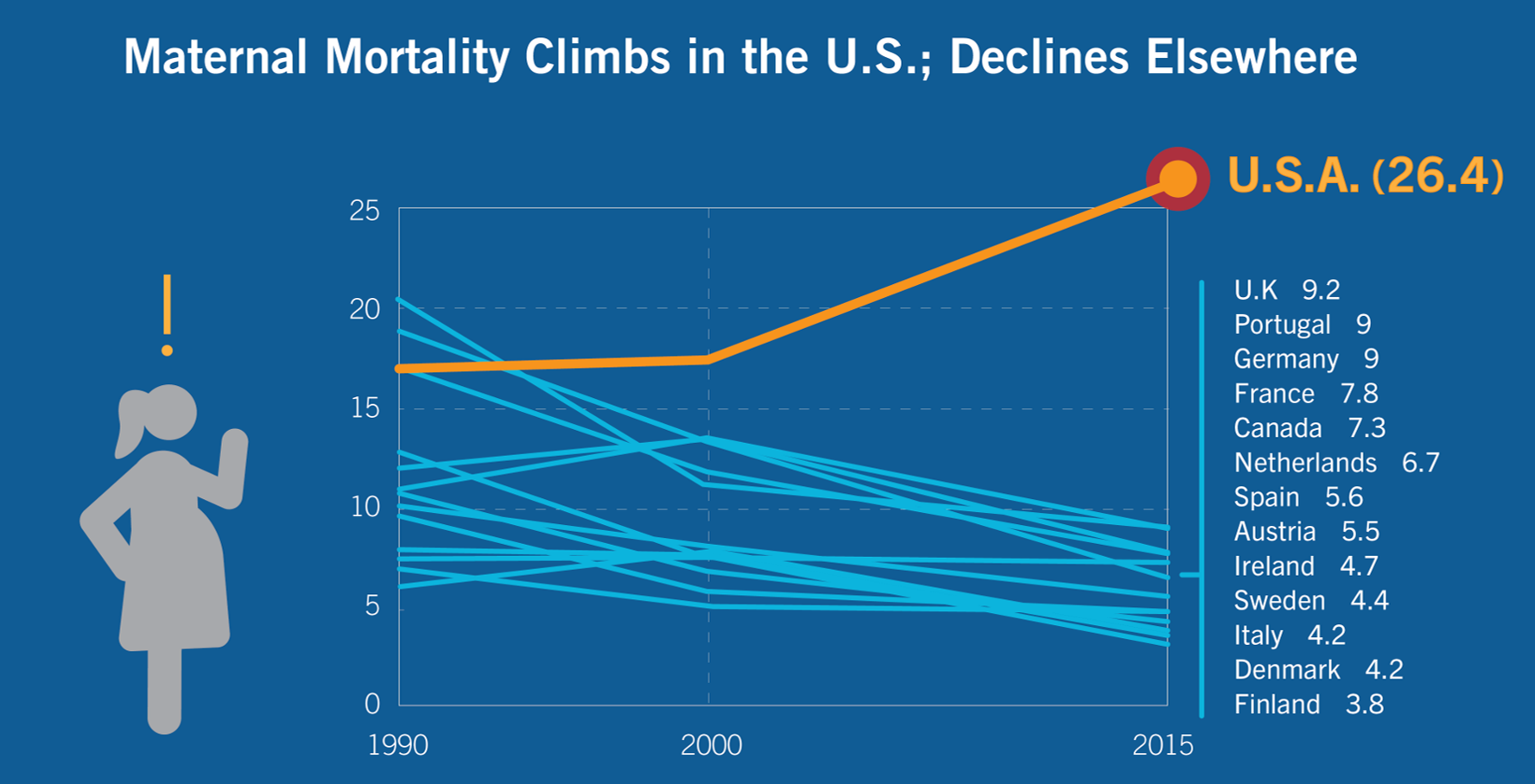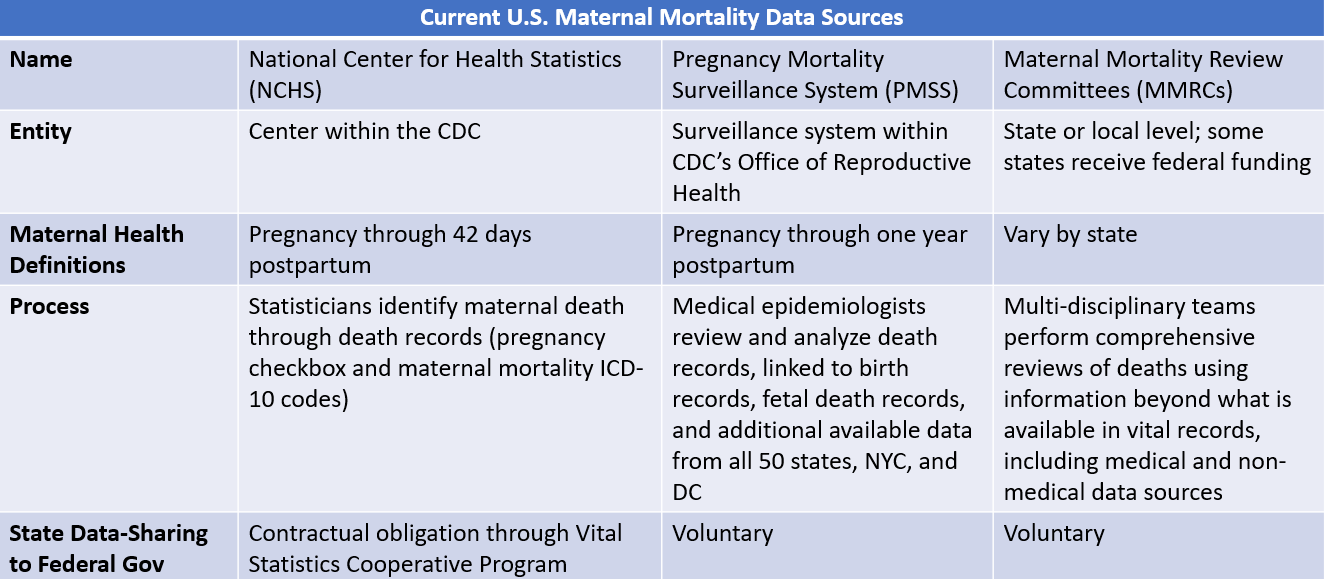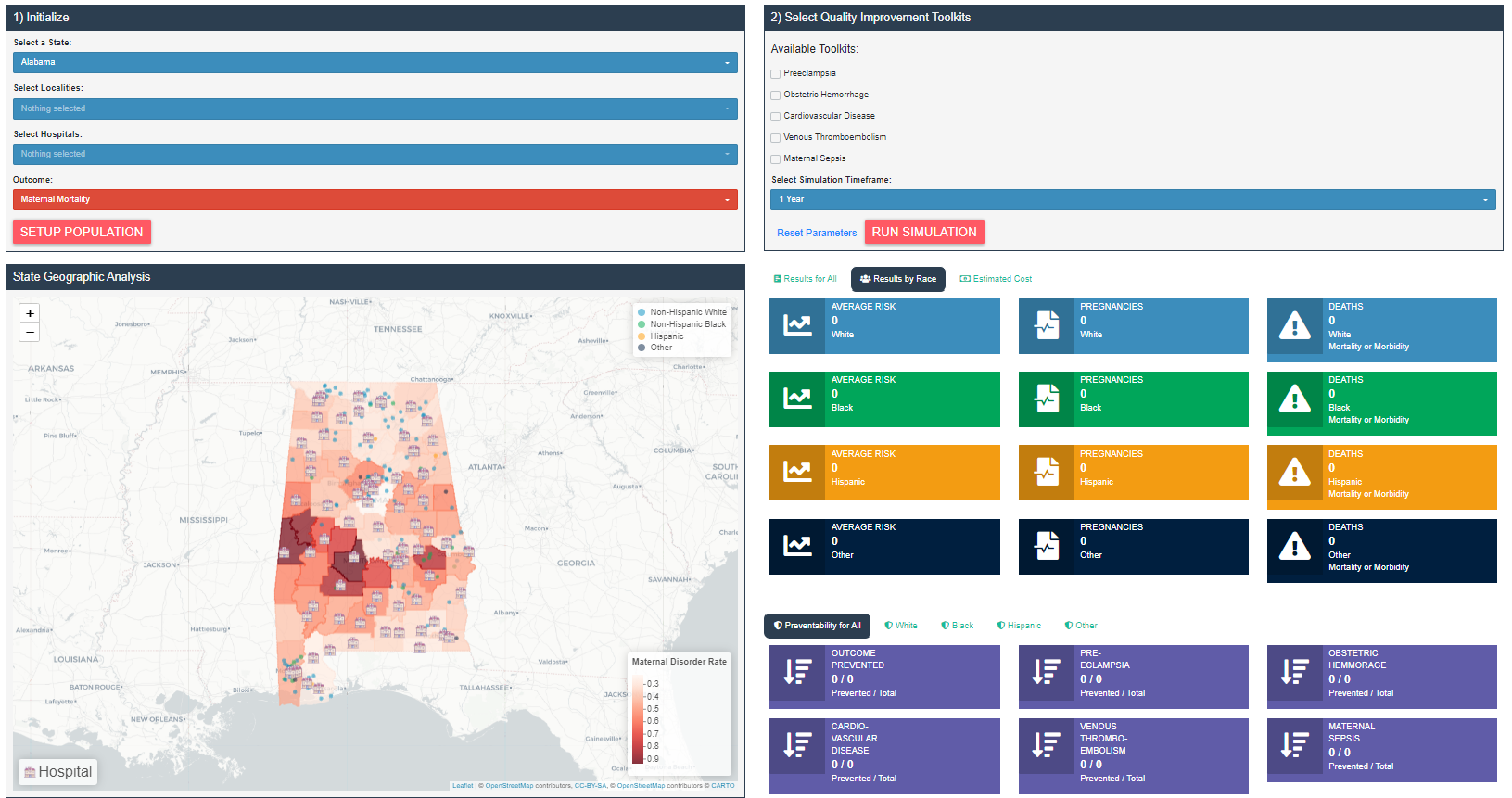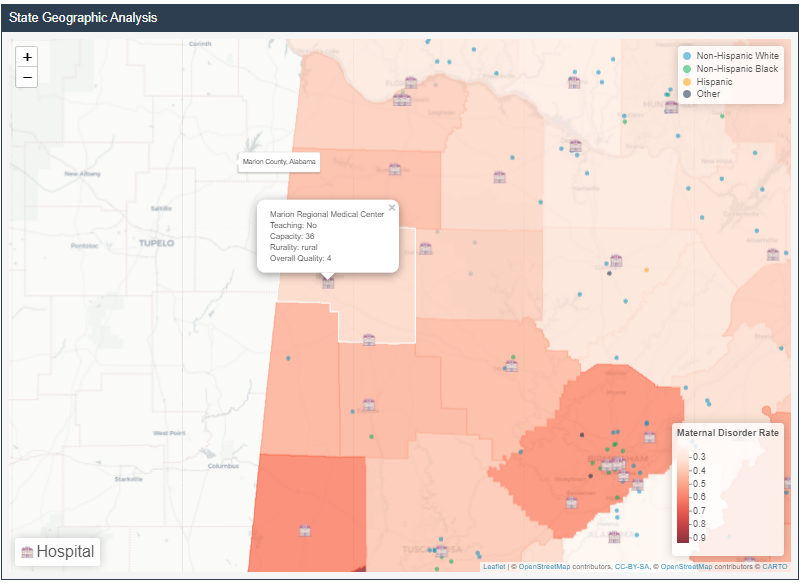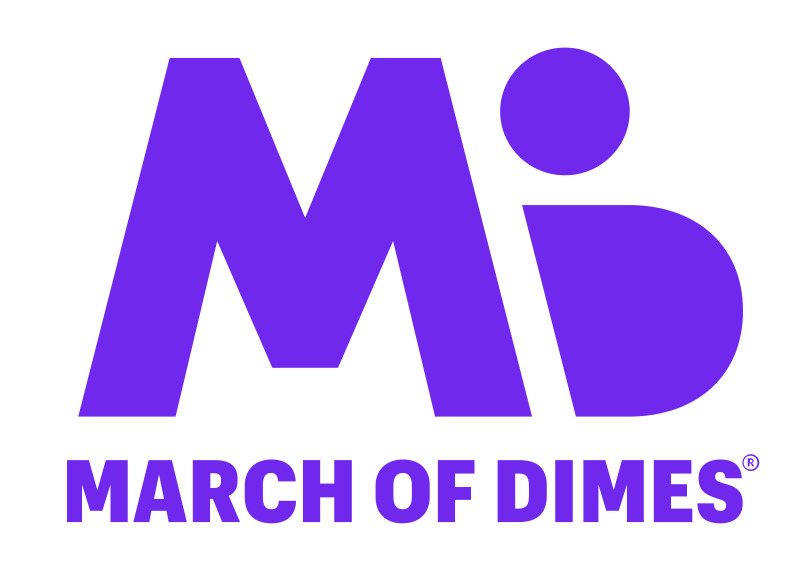Overview of Maternal Health
The United States is the only developed nation in the world with an increasing maternal mortality rate. Nearly 1,000 women die each year from pregnancy or pregnancy-related complications. Approximately 50,000 women suffer from severe complications of pregnancy (e.g., severe maternal morbidity). Non-Hispanic Black and American Indian/Alaska Native women are 2-3 times more likely to suffer a pregnancy-related death than Non-Hispanic White women. Many rural counties have also lost their hospital-based obstetric services, creating “obstetric deserts” where women must travel long distances to access care. These challenges have led to the development of the Maternal Mortality and Morbidity Interactive Dashboard (3MID), which creates a virtual environment for researchers to test interventions designed to reduce maternal morbidity and mortality rates, especially for marginalized communities.

